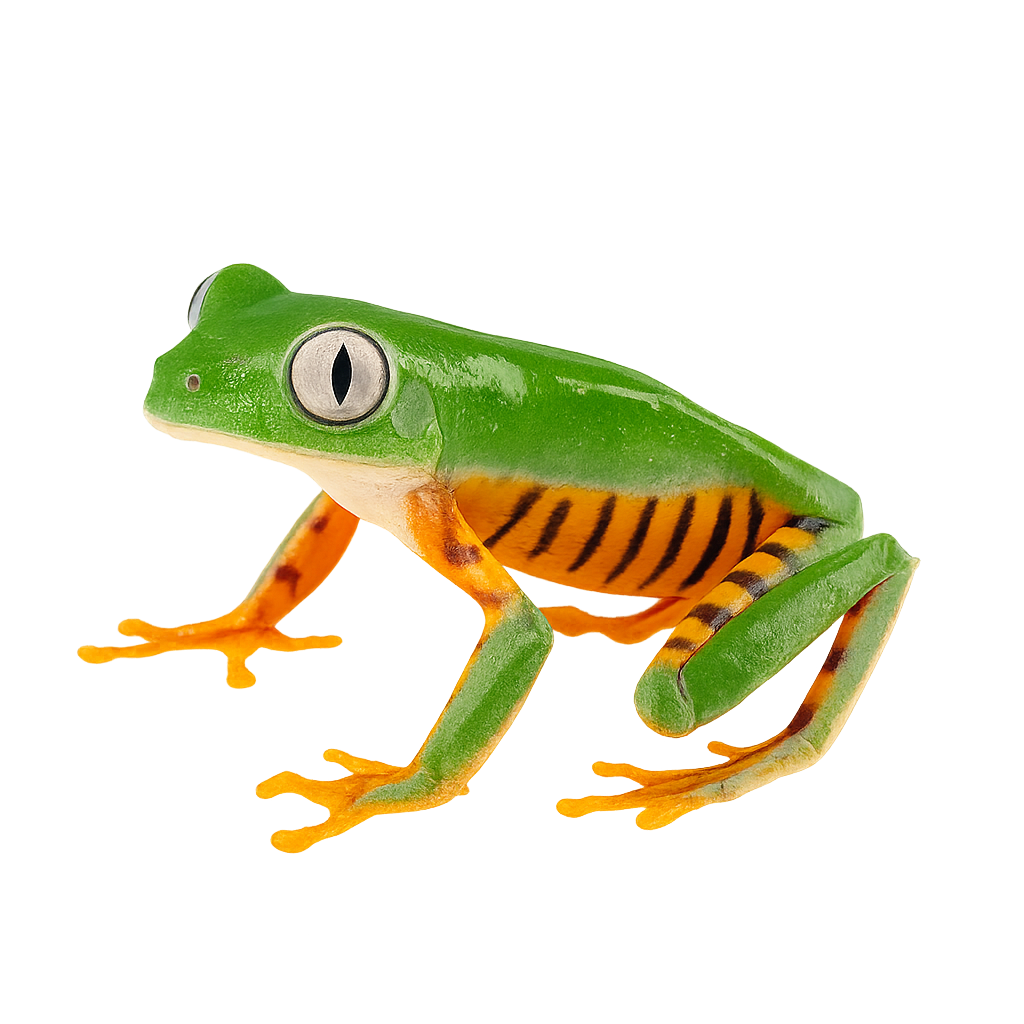Your wildlife photography guide.
Explore the orange-legged leaf frog in detail, study its behavior, prepare your shots.
Where to observe and photograph the orange-legged leaf frog in the wild
Learn where and when to spot the orange-legged leaf frog in the wild, how to identify the species based on distinctive features, and what natural environments it inhabits. The WildlifePhotographer app offers tailored photography tips that reflect the orange-legged leaf frog’s behavior, helping you capture better wildlife images. Explore the full species profile for key information including description, habitat, active periods, and approach techniques.
Orange-legged Leaf Frog
Scientific name: Phyllomedusa hypochondrialis

IUCN Status: Least Concern
Family: HYLIDAE
Group: Amphibians
Sensitivity to human approach: Suspicious
Minimum approach distance: 2 m
Reproduction period: November to March
Incubation: 8–12 jours
Births: December to April
Habitat:
tropical forests, subtropical forests, wetlands
Activity period :
Mainly active at night, generally discreet during the day.
Identification and description:
The Orange-legged Leaf Frog is a medium-sized arboreal frog belonging to the Hylidae family. It is recognizable by its smooth skin and bright colors, usually green with white or yellow patterns on the sides. This species is primarily nocturnal and is found in the tropical and subtropical forests of South America, particularly in Brazil, Argentina, and Paraguay. It is well adapted to arboreal life thanks to its adhesive fingers, which allow it to climb easily. The Orange-legged Leaf Frog plays a crucial role in its ecosystem as a predator of insects, thus contributing to the regulation of harmful insect populations.
Recommended lens:
Macro – adjust based on distance, desired framing (portrait or habitat), and approach conditions.
Photography tips:
To photograph the Orange-legged Leaf Frog, it is advisable to use a macro lens to capture the details of its colorful skin. Look for it in tropical and subtropical forests, mainly at night, as it is nocturnal. Make sure not to use direct flash to avoid disturbing it. Opt for soft, diffused lighting to highlight its natural colors. Be patient and wait for it to settle on a leaf or branch to get a stable and sharp shot.
The WildlifePhotographer App is coming soon!
Be the first to explore the best nature spots, track rutting seasons, log your observations, and observe more wildlife.
Already 1 432 wildlife lovers subscribed worldwide

